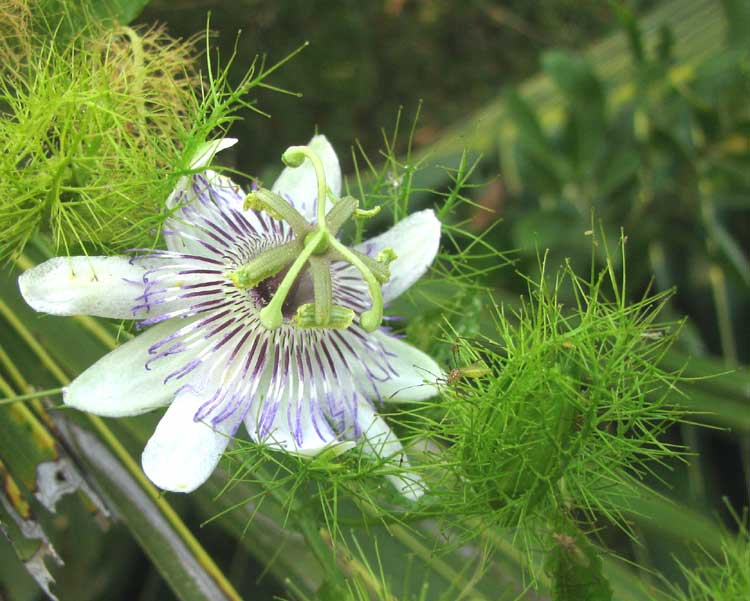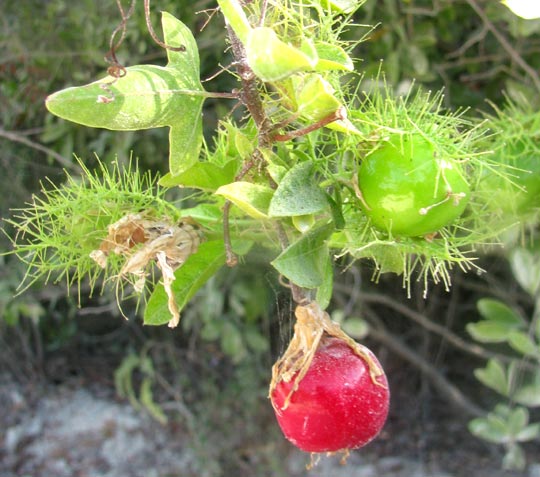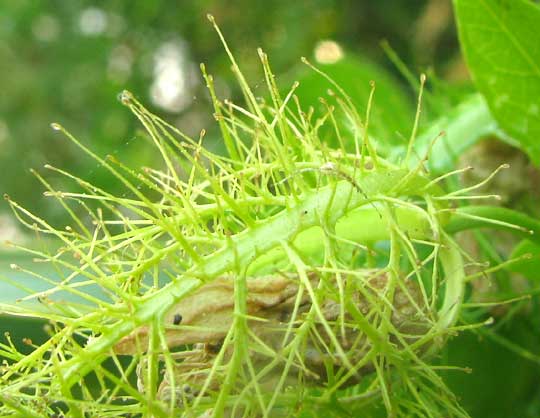Excerpts from Jim Conrad's
Naturalist Newsletter

from the June 6, 2011 Newsletter issued from Mayan Beach Garden Inn 20 kms north of Mahahual; Caribbean coastal beach and mangroves, ~N18.89°, ~W87.64°, Quintana Roo state, MÉXICO
LOVE-IN-A-MIST
One of my tiny triumphs here is to have introduced Marcia and some other folks along the beach to the red-fruited, three-lobed-leafed, twining vine shown below:

Actually, folks here already were familiar with it, knowing that it grows weedily into roadside trees and sprawls across sandy lawns that have been scalped and abandoned. They just hadn't looked closely at the red fruits and, especially, the flower's complex, pretty, 1-½ inches across (4cm) flowers, one of which is shown at the top of this page.
If you're a North American wildflower enthusiast you recognize the blossom as a passionflower, though those ferny appendages around the corolla won't look right. A closer look at those, showing that each needlelike section is tipped with a sticky gland, is shown below:

The ferny items are much-divided bracts, or modified leaves, subtending the flower. When something is as finely dissected as that it's said to be "fimbriate." Insects get caught among the sticky bracts, and laboratory analysis shows that the bracts' glue contains digestive enzymes. The stickiness repels flower-eating insects, but it's not known whether the plant absorbs nutrients from digested prey.
So, what we have here is truly a passionflower, one so widely distributed throughout the world's tropics that it goes by many English names, among them Stinking Passionflower, Mossy Passionflower, Wild Passionfruit, Running Pop, Wild Maracuja, and then there's the painfully evocative Love-in-a-mist. The binomial the whole world agrees on is PASSIFLORA FOETIDA, "foetida" being the Latin for "stinking," because of the odor of the vine's crushed leaves.
The kumquat-sized fruits produce a tasty pulp similar to that of market-bought passionfruits, just in much smaller portions.
Love-in-a-mist is native to the American tropics but has become a pretty weed in many Old World tropical countries.